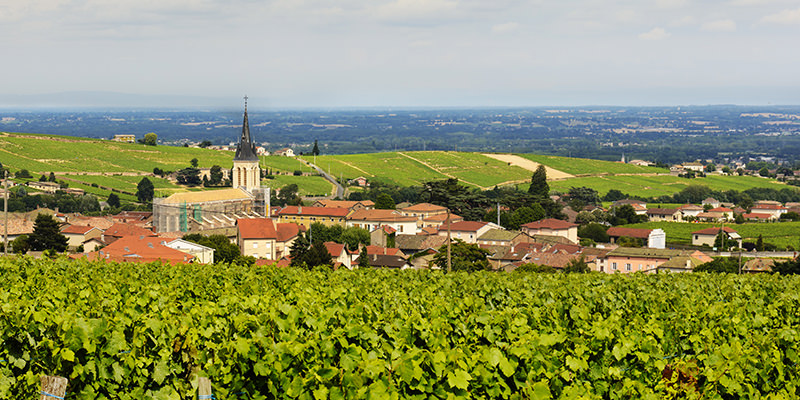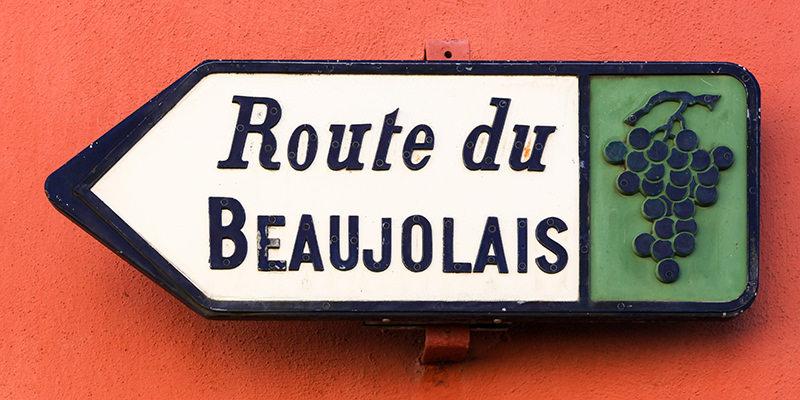
Remember the tale of the ugly duckling, the bedtime story your mom read you while you peacefully drifted off to sleep? This story has a universal message: with perseverance and luck, and in spite of the world’s cruelty, everyone is bound to find his own path and identity.
Beaujolais is the ugly ducking among French wines. People have always considered it a lesser region, one that was capable of only producing cheap, simple wines and, until very recently, nobody really seemed to care. A couple of years ago, however, people suddenly realized that there is more to Beaujolais than just its November banana-scented-joke-of-a-wine release. Since that moment, the region has been steadily gaining momentum and has seduced more and more wine lovers by its elegant and food-friendly bottles.
Here is an abridged story of Beaujolais that will help you debunk common myths surrounding these delicious yet little-known wines.
The curse of the duke
While we may never learn who actually put the swan’s egg in a duck’s nest and why, we do know who is at the origin of Gamay’s substandard reputation. The story goes all the way back to the 14th century, when Philip the Bold, Duke of Burgundy, banished the grape from his kingdom. He considered Gamay “evil and dishonest,” capable of yielding wines of “very great and terrible bitterness” and therefore ordered all its plantings to be replaced by his favorite, Pinot Noir. Gamay moved to Burgundy’s southernmost backwater, the little-known and inaccessible Beaujolais, where it stayed for centuries.

During that time, wine produced in Beaujolais was unsophisticated and of rather poor quality. It was used as an altar wine, and was often diluted with water to quench the thirst of local peasants. In the 16th and 17th centuries, however, these simple wines became popular in the busy bistrots of Lyon, which have become the region’s principal market. The Lyonnais believed in the medicinal properties of wine and drank it sans modération – as much as half a liter of wine per day per person, including children, infants and elderly. Beaujolais wine was so popular that people used to refer to Lyon as a place where three rivers converge: the Rhône, the Saône, and the river of Beaujolais wine.
The Industrial Revolution in the 19th century meant a little revolution for Beaujolais wines, too: the modern railroad system expanded their market and brought them straight to Paris. Never has Beaujolais been so successful and its winemakers so prosperous. But as levels of production rose, the quality kept declining. And with the advent of Beaujolais Nouveau in the 1960s, it hit rock bottom.
Beaujolais, the cradle of natural winemaking
As the Beaujolais Nouveau craze continued to grow, winemakers took to modern techniques, which dramatically increased the quantity (rather than quality) of their wines. Specially designed artificial yeast strains gave the characteristic bubblegum flavor and speeded up the fermentation process; additional sugar counterbalanced the acidity of the unripe grapes (a process called chaptalization); and vineyards were over-cropped and flooded with pesticides.
In the short term, Beaujolais Nouveau provided financial stability to the local wine industry. But it also severely undermined the reputation of the region for decades to come.
All would have probably been lost forever were it not for a group of winemakers who, against all odds, started making completely different, eco-friendly wines. At the forefront of this movement stood Jules Chauvet, a chemist, négociant and winemaker who called for more natural methods, both in the vineyard and in the cellar. According to Chauvet, a good wine was meant to reflect the place of its origin – a.k.a. its terroir. To achieve this, the scientist advocated minimal human intervention, organic farming and the use of native yeast. He devised cold carbonic maceration, the region’s signature fermentation method, and opted for winemaking with little or no added SO2. Considered the father of the natural-wine movement, Chauvet inspired future generations of biodynamic and organic winemakers across the world.
Marcel Lapierre, Jean-Paul Thévenet, Jean Foillard, Guy Breton – all members of the famous ‘Gang of Four’ – were greatly influenced by Jules Chauvet. The men converted their family vineyards to organic and biodynamic production in the early 1980s, producing exceptionally elegant and age-worthy wines that let both Gamay and its terroir shine through.
Beaujolais is a great place to start your winemaking business
“Vine growing in Beaujolais has always been hard,” says Robin Alloin, ex-head sommelier at Château de Bagnols and owner of VinExtenso, a company that organizes tasting events. “But Beaujolais has an incredible winemaking potential,” he says. “Gamay yields fantastic wines. All great French winemakers have already understood that.”
Not only them. Many lesser-known (or even newbie) winemakers have chosen to settle in Beaujolais – for various reasons. James and Sarah, owners of Château Grange Cochard and Burgundy aficionados, say that high vineyard prices in Burgundy have dissuaded them from settling in the region and that in Morgon, they found the finesse and elegance of some of Burgundy’s best appellations. Richard Rottiers, who comes from a winemaking family in Chablis, declares that it was the beauty of the land and the positive, friendly environment that persuaded him to settle in Moulin-à-Vent.
Today, Beaujolais’ reputation is steadily improving. Winemakers are committed to making great wines, and scientists are eager to help them. In 2009, a group of pedologists (scientists that study the origin and composition of soils) launched new, complex soil research that encompasses the entire Beaujolais area. Its mission is to “help winemakers understand the specificities and the diversity of their vineyards’ soils,” says Bertrand Chatelet, director of Sicarex, the research institute in Villefranche-sur-Saône devoted to the study of vines in Beaujolais. “The detailed information we provide will allow the winemakers to make an effective use of their soils, skillfully address disaster-related risks, manage pests and choose new grape varieties.”
Isabelle Letessier, the research group leader, is enthusiastic about the project’s results. “The research empowers and comforts winemakers,” she says. “The data allows them to talk about the terroir and their vineyards’ potential more freely; it shows them that Beaujolais, just as any other wine region, is a place they can be proud of.” Currently, 90 percent of the region’s soils have been analyzed and the final results are due to be released in autumn 2017.
How to find great bottles of Beaujolais
You have probably understood it by now: Beaujolais is good, we should all be drinking more of it! Here are some tips for choosing the right bottle.
There are three styles of Beaujolais wines:
- If you like light-bodied, lively, juicy wines that taste like strawberries, cherries and raspberries, you should go for the generic Beaujolais appellation. These are food-friendly wines that go well with your favorite everyday dishes.
- If you like slightly more ambitious and complex wines that are as food-friendly and juicy as the previous ones, opt for the Beaujolais-Villages AOC. These wines have a deeper color and a more complex character due to the soils here: granite and sand. Beaujolais-Villages display flavors of red and dark fruits.
- Finally, the famous 10 crus. The wines from this small, delimited area display the full beauty and aging potential of the Gamay grape. These wines are extremely elegant, subtle and complex, reminiscent of some of the finest wines from Burgundy. They are absolutely lovable and, what’s more, they are still affordable. They are a real treat for unpretentious wine lovers.
You should also bear in mind that Beaujolais is not only about still red wine. Producers here make rosé, sparkling and delightful white wines. The latter are always made from Chardonnay, although producers such as Jean-Paul Brun also add the Roussanne grape. The best examples of Beaujolais Blanc are mineral and lively. They display flavors of stone fruits, pear, lemons and melon.
Producers worth knowing:
- Marie Thérèse and François Subrin, domaine Cret de Bine
- Jean-Paul Brun
- Domaine du Vissoux
- Romain Jambon
- Domaine Mee Godard

